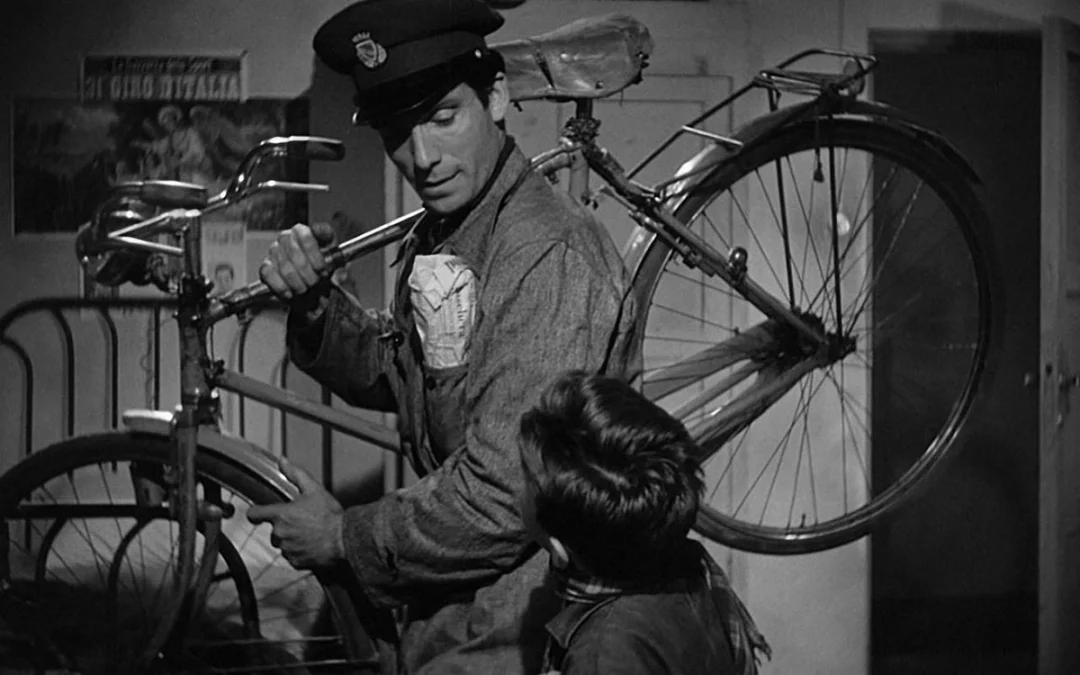Key Takeaways
- The right wood can significantly improve the taste of meat.
- Hardwoods like oak and beech give a strong flavor.
- Fruitwoods like apple and cherry add sweetness.
- Combining different woods can create unique aromas.
- It's advisable to consider which wood best suits the meat.
Introduction to Meat Smoking
Smoking meat is an ancient method to preserve and enhance the flavor of food. A key element is choosing the right wood. Each type of wood imparts a special flavor, so it’s important to select one that best complements the meat.
Why Does the Choice of Wood Matter?
The right wood can significantly improve the taste of meat. For example, resin-rich wood can give meat an unpleasant bitter taste. Beech is an ideal choice as it provides a mild and pleasant aroma that enhances the flavor of meat.
Using the right wood can turn ordinary meat into a delicacy.
Rules and Guidelines for Choosing Wood for Smoking
When choosing wood for smoking, there are some basic rules:
- Avoid wood with high resin content, such as pine and fir.
- Ensure the wood is well dried before use to avoid excessive smoke production.
- Choose wood that complements the flavor of the meat you are smoking, such as beech for meat smoking.
Properly chosen wood ensures the meat gains the desired aroma and becomes a true delicacy.

Hardwoods for Smoking Meat
Hardwoods like beech, oak, maple, and acacia burn slowly. They provide a rich, deep smoke flavor ideal for stronger meats. Each wood type adds a unique note to the meat, so the choice depends on personal preference.
Beech
Beech is one of the most commonly used hardwoods for smoking meat. It produces a mild, sweet smoke that pairs well with most types of meat. Beech is a great choice for those who prefer a milder taste.
Oak
Oak for smoking meat provides a strong, intense flavor that pairs excellently with pork and beef. Oak is known for its durability and ability to give a deep, smoky aroma. This wood type is popular among strong smoke enthusiasts.
Maple
Maple smoke gives a mild, sweet, and slightly fruity flavor. This wood is ideal for those who want to add subtle sweetness to their smoked meat. Maple is often used for smoking pork but is also good for chicken and fish.
Acacia
Acacia is known for producing a light, mild smoke that does not overpower the natural flavor of the meat. Due to its versatility, it is often used in combination with other hardwoods to achieve a balanced flavor. Acacia is excellent for all types of meat, including chicken and fish.
- Beech – mild, sweet smoke
- Oak – strong, intense flavor
- Maple – mild, sweet and fruity smoke
- Acacia – light, mild smoke
Fruitwoods for Smoking Meat
Fruitwoods can give meat sweet aromas, making the meat very appealing. Apple, cherry, apricot, and hazelnut are popular choices for smoked meat lovers.
These woods are ideal for chicken and fish. They add rich flavor without too much intensity.
Apple
Apple is the most commonly used fruitwood for smoking. Its mild, sweet aroma perfectly complements chicken and fish. It also gives the meat a golden-brown color.
Many gourmets prefer apple for smoking meat because of its ability to enrich the flavor.
Cherry
Cherry provides a wonderful aroma often used with hardwoods. Cherry alone can give a unique flavor. It adds a reddish tint to the meat.
It is ideal for pork and chicken. It ensures the meat is both tasty and visually appealing.
Apricot
Apricot adds sweetness and an almond aroma. It perfectly complements fish and some delicate meats. Meat smoked with apricot takes on a lovely orange-brown tone.
This type of wood is especially popular in southern regions.
Hazelnut
Smoking meat with hazelnut adds a rich, nutty aroma. This wood gives meat a golden-yellow color and creamy texture. It creates a unique flavor.
Hazelnut is especially appreciated by gourmets seeking unique aromatic profiles.
Wood for Smoking Meat
The choice of wood for smoking can significantly influence the taste, aroma, and final result of your meat. Different types of wood offer different characteristics. Experimenting with them can reveal unique tastes and aromas.
When choosing wood for smoking meat, it is important to consider the type of meat. For example, oak provides strong smoke that works best with beef and pork. Mild apple smoke suits chicken and fish better.
By experimenting with combinations of hardwood and fruitwood, it is possible to achieve the perfect balance. This brings richness to the flavor.
The quality of the wood is crucial. Dry wood is best as it produces even smoke. Also, avoid wood treated with chemicals for a healthier product.
Consistency of flavor comes with experience. Knowing the properties of different types of wood for smoking is key. Each type, including beech, oak, maple, and acacia, brings its own unique characteristics.
Advantages and Disadvantages of Different Types of Wood
When talking about wood for smoking meat, several things must be considered. Hard and soft woods have their pros and cons. They affect the quality and taste of meat.
Hardwoods
The advantages of hardwood are many. Beech and oak give strong smoke that penetrates deeply into the meat. This provides a rich aroma.
Hardwoods burn slowly. This allows stable temperature during smoking. It makes smoking more efficient and gives a unique flavor.
Softwoods
Softwoods, like pine, have fewer advantages. They burn quickly and can cause unpredictable temperatures. This can damage the meat.
High resin content in softwoods can spoil the taste of meat. That is why softwoods are less popular among smoking enthusiasts.
Smoking Pork and Beef
Smoking meat, whether pork or beef, requires attention. The wood must be well chosen for the meat to have a good aroma. Different types of wood can be key for good meat quality.
The Best Wood for Pork
For pork, woods like apple and cherry are best. They give the meat a sweet aroma. This enhances the flavors of pork.
Fruitwoods bring a fruity note. This pairs well with the fat content of pork.
The Best Wood for Beef
For beef, stronger woods are best. Oak and maple are ideal. They give a deep aroma that pairs well with beef.
This ensures a rich flavor that lasts long.
Smoking Chicken and Fish
Smoking chicken and fish brings special challenges. Different textures and flavors require a special approach. Proper wood selection can greatly improve the result. This produces rich aromas that complement the juiciness of the meat.

The Best Wood for Chicken
Smoking chicken works best with softer woods. Apple and apricot are ideal choices. They add mild aromas that don’t overpower the meat’s taste.
Apple gives a subtle, sweet smoke. Apricot adds a mild fruity note. This ensures rich flavor and juiciness retention.
| Wood Type | Advantages | Note |
|---|---|---|
| Apple | Mild, sweet smoke | Excellent for smoking chicken |
| Apricot | Fruity, light smoke | Complements the natural meat flavor |
The Best Wood for Fish
Smoking fish works best with acacia. Acacia gives a mild, expressive aroma. This aroma perfectly blends with the texture of fish.
Acacia does not overpower but highlights the flavor. This allows the natural taste of fish to shine. That is why acacia is a popular choice.
| Wood Type | Advantages | Note |
|---|---|---|
| Acacia | Mild and expressive aroma | Ideal for smoking fish |
The Difference Between Fruitwoods and Hardwoods
When smoking meat, the choice of wood is crucial. Fruitwoods and hardwoods give different results. It is important to know this.
Taste and Aroma
Fruitwoods like apple, cherry, and apricot give a mild aroma. They add a sweet tone to meat. This is great for chicken and fish.
Smoking Duration
Hardwoods like oak and beech give stronger smoke. They smoke longer, which is good for pork and beef. These meats need more time to get good aroma.
Choosing wood correctly is important. Think about your smoking needs. This way you get the best result.
Different Forms of Wood for Smoking
Smoking meat requires careful wood selection. Not only the type, but also the form of wood matters. Each form offers its advantages, from uniformity to deep aroma penetration.
Pellets
Smoking pellets are popular for their uniformity. They provide stable heat and consistent smoke. They are ideal for home smokers and grills.
Chips
Chips are used for short smoking sessions. They burn quickly and add intense aroma. Ideal for shorter processes like smoking chicken.
Logs
Logs are the traditional form of wood for smoking. They burn slower, allowing deep aroma penetration. Ideal for smoking larger meat cuts.
Rounds
Rounds are the longest-lasting form of wood. Used in professional smokers. Provide stable heat and are ideal for larger meat batches.
Wood Combination for Specialties
Combining hardwood and fruitwood creates unique aromas. They enhance the flavor of meat delicacies. Different woods allow creating smoking specialties.
Mixing Hard and Fruit Woods
The combination of oak and apple provides the perfect balance. Oak gives meat a deep flavor. Fruitwood like apple adds sweet notes.
Oak and apple: a popular combination for smoking pork and beef, ensuring a rich, well-rounded flavor.
Best Combinations
The right wood combination is key for perfect flavor. Smoking specialties use the following combinations:
- Oak and cherry: a great choice for smoking chicken, providing deep and sweet smoke.
- Beech and apple: an ideal combination for pork, delivering rich and layered flavor.
- Maple and apricot: perfect for fish, adding mild sweetness and fruity aroma.
Choosing the right wood combinations for smoking enables a top gastronomic experience. Unique flavors are created.
Woods to Avoid When Smoking
When smoking meat, some types of wood should be avoided. They can produce unpleasant smells and tastes. Also, they burn faster, which can complicate temperature control.
Softwoods and conifers are among the most avoided types.
Softwoods
Softwoods like poplar, birch, and willow are poor choices for smoking. They burn quickly and produce little smoke. This can reduce smoking efficiency.
High moisture content in these woods leads to soot. This negatively affects meat taste.
Coniferous Woods
Coniferous woods like pine, spruce, and fir should be avoided. Their high resin content can cause unpleasant odors and tastes in meat. Therefore, they are known as bad woods for smoking.
Resin from these woods can increase fire risk. This makes smoking less safe.
How to Prepare Wood for Smoking
Preparing wood for smoking is a key step for good smoked meat flavor. Precise drying and wood selection ensure clean smoke and top product quality. Wet or dirty wood can damage taste and aroma.
Drying Wood
Drying takes several months. Pieces are placed in a ventilated place, protected from rain. Wood must be completely dry for clean and even smoke.
Choosing the Best Pieces
Choosing the best wood pieces is crucial. Use hardwoods like oak and maple. They add a special aroma to the meat.
Proper wood preparation is important. Care ensures the top quality of your smoked meat.
Experimenting with Different Types of Wood
Experimenting with wood for smoking brings many advantages. Especially when looking for unique combinations of flavors and aromas. Combining different woods can greatly improve the quality of smoked meat.
Advantages of Experimenting
Experimenting with wood allows discovering new combinations. For example, mixing hardwood and fruitwood can give an exceptionally rich meat flavor. Also, experimenting helps understand the effects of different woods on meat color, smell, and aroma.
How to Avoid Mistakes
To avoid mistakes when experimenting, follow some tips:
- Follow recommendations for specific woods for certain types of meat.
- Do not use soft or coniferous woods as they can give meat a bitter taste.
- Carefully monitor the smoking process to adjust temperature and smoke amount.
Common Mistakes in Choosing Wood for Smoking
Mistakes in smoking can damage meat flavor. One of the most common mistakes is using too much wood. This can lead to overly strong smoke flavor and reduce meat taste.
Wood should be in the right amount to get good taste.
Another big mistake is using the wrong wood for specific meat. For example, maple or beech is not good for fish as it can spoil its taste. It is important to choose wood that pairs well with the meat.
Improper wood preparation can also be a problem. Wood should be well dried to avoid excessive smoke. Wet wood can add bitter taste to the meat. Also, resinous wood like conifers can produce harmful toxins.
To avoid mistakes in smoking, it is important to thoroughly research wood selection and preparation methods. Only with proper preparation and wood choice can you achieve the desired result and enrich your dish with authentic aroma.
Conclusion
The conclusion about smoking meat is that the right choice of wood is key. Each wood type gives a special flavor. This makes smoked meat richer.
To get good results, it is important to properly prepare the wood. Quality wood allows maintaining constant temperature. Also, combining hardwood and fruitwood adds complex aroma.
To become good at smoking, experiment with various woods. Every mistake is a learning opportunity. If you pay attention to details, you can achieve top quality.
FAQ
Why is it important which wood to use?
The right wood can significantly improve the flavor of smoked meat. Wood affects taste and aroma. That is why it is important to know which wood is best for which meat.
What are the rules and guidelines for choosing wood for smoking?
Wood should be well dried. Hardwoods, like beech, give rich smoke.
Fruit woods, such as apple, produce milder smoke.
What are the advantages of smoking meat with beech?
Beech gives meat a deep, rich flavor. It is ideal for beef and pork.
How does oak affect the taste of smoked meat?
Oak gives meat a strong, robust smoke. It is ideal for beef and pork.
What are the characteristics of smoking with maple and acacia wood?
Maple gives meat a mild, sweet aroma. It is ideal for pork and chicken. Acacia gives meat a specific, mild smoke.
For which types of meat are fruit woods like apple, cherry, apricot, and hazelnut ideal?
Fruit woods produce milder, sweeter smoke. They are ideal for more delicate meats like chicken or fish.
Which wood is best for smoking pork?
Apple or cherry are ideal for pork. They give the meat juiciness and a sweet aroma.
Which wood is best for smoking beef?
Oak or maple give beef a strong, rich flavor.
What are the advantages of combining hardwood and fruit wood?
The combination of hardwood and fruit wood gives meat a layered, unique aroma. For example, oak is often used with apple.
Why should softwoods and coniferous woods be avoided when smoking?
Softwoods burn faster and can produce unpleasant odors. Coniferous woods have too much resin, which can spoil the taste of the meat.
How to properly prepare wood for smoking?
Carefully select and dry the wood. Wet or dirty wood can damage the taste of the meat. Dried wood ensures clean smoke.
What are the advantages of experimenting with different types of wood?
Experimenting allows discovering new tastes and aromas. It is important to choose wood types carefully. Mistakes can be avoided by using recommended types.
What are the most common mistakes when choosing wood for smoking?
Mistakes include using too much wood, which produces overly strong smoke. Using wrong wood types can spoil the meat. Inadequate preparation of wood can also lead to poor results.












